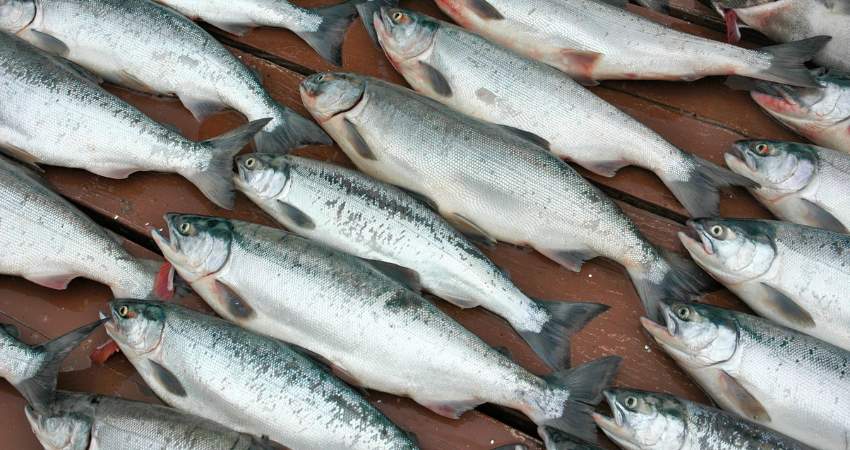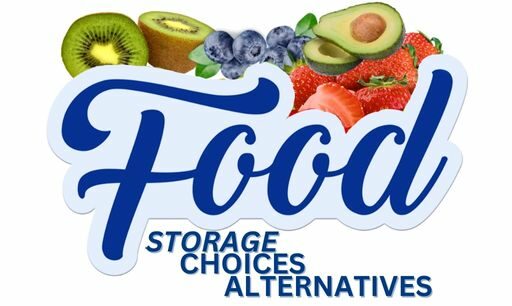Keta Salmon vs Sockeye Salmon: What’s The Difference?
Keta and sockeye salmon are different fish species, but many people don’t recognize all of the differences at first glance. Let’s examine the differences between the two salmon.
Sockeye salmon are a silvery blue-green color while keta are red and green. Sockeye has less cholesterol and more protein than keta salmon. While sockeye salmon contains more sodium than keta salmon, neither contain carbs. A serving of keta and sockeye salmon has similar amounts of fat and calories.
This article will take a closer loom at their differences including a side-by-side nutrient comparison. In addition, I’ll examine their tastes, textures, mercury levels, prices and if one can substitute for the other.
Keta Salmon or Dog Salmon
I’ve purchased, researched and consumed both salmon prior to, during and sometimes after writing this article. As a Certified Health Coach many clients ask me about food comparisons including salmon. Therefore, I have researched this topic in the past and present. Let’s examine them closely.
Keta salmon is more commonly known as chum salmon or dog salmon. It belongs to the species of pacific salmon, and its scientific name is Oncorhynchus keta. They live for about 3 to 5 years and can grow to be up to 3.6 feet long.

Sockeye Salmon
Sockeye salmon is a species of pacific salmon typically living for 3 to 7 years. They are otherwise known as the red salmon or the blueback salmon. Its official scientific name is Oncorhynchus nerka.

Nutrient Comparison
| Nutrient | Keta Salmon, raw (4 Ounces) | Sockeye Salmon, raw (4 Ounces) |
| Calories | 136 | 149 |
| Fat | 4.3 g | 5.3 g |
| Protein | 23 g | 25 g |
| Omega-3 | 0.80 g | 0.96 g |
| B-6 | 0.45 mg | 0.82 mg |
| B-12 | 3.4 mcg | 5.32 mcg |
| Thiamin | 0.09 mg | 0.15 mg |
| Riboflavin | 0.20 mg | 0.23 mg |
| B5 | 0.85 mg | 1.21 mg |
| Iron | 0.62 mg | 0.49 mg |
| Vitamin A | 34.02 mcg | 55.57 mcg |
| Niacin | 7.93 mg | 9.64 mg |
| Folate | 4.54 mcg | 6.80 mcg |
| Potassium | 486 mg | 416 mg |
| Magnesium | 25 mg | 34 mg |
| Phosphorus | 320 mg | 291 mg |
| Calcium | 12.47 mg | 10.21 mg |
| Zinc | 0.53 mg | 0.52 mg |
| Selenium | 41.4 mcg | 33.8 mcg |
Sources1 ((FDA: Seafood Nutrition Facts))
Examining the table above it’s easy to see both fish are full of nutrients.
Sockeye salmon is better than keta salmon due to its higher number of omega-3 fatty acids and B vitamins. They contain a larger percentage of B6, B12, thiamin, riboflavin, B5, niacin, folate and magnesium. They also contain more protein, vitamin A and less cholesterol than keta.
Although the salmon keta is no slouch and provides many nutrients. They contain more iron, potassium, phosphorus and calcium. Although it doesn’t have more omega-3s, it still provides a good number.
Depending on the availability at the supermarket or fish market, I always choose to purchase sockeye salmon over most other types.
Check out how cod compared in my article here, Cod vs Salmon: Is One Better?

Health Benefits
The nutrients contained in salmon benefit the body in many ways, especially omega-3 fatty acids. The nutrients and how they benefit the body is discussed below.
Sockeye Salmon Benefits
Omega-3 Fatty Acids
Of all the nutrients, omega-3 fatty acids may be the most important. Both salmon contain a good amount, but sockeye contains a little more. Omega-3 fatty acids are healthy in many ways, especially for the heart.
B Vitamins
The B vitamins provided by salmon include the following:
- B1 (thiamin)
- B2 (riboflavin)
- B3 (niacin)
- B5
- B6
- B9 (folate)
- B12
Sockeye contains more of all of them. B vitamins help support the following:
- Energy levels.
- Cardiovascular disease.
- Brain function.
- Digestion.
- Nerve function.
- Red blood cells.
Magnesium
Magnesium helps keep blood pressure levels stable and balanced. A recent study researched previous studies and concluded magnesium supplementation decreased systolic and diastolic blood pressure2.
The following video explains the benefits of salmon and other fish.
Keta Salmon Benefits
Potassium
Keta provides 486 mg of potassium per four ounces. It helps the body get rid of excess sodium reducing fluid build-up. These helps keep systolic and diastolic blood pressure lower3.
The more potassium, the more sodium your body will lose. Consuming too much sodium or not enough potassium throws off the delicate balance the kidneys need to remove the excess water4.
According to Harvard Health, a number of studies have shown a connection between high blood pressure and low potassium levels5.
Calcium
Keta provides 12.47 grams per four ounces. Calcium is important for the heart and blood pressure. Harvard Health reports calcium helps maintain blood pressure by helping in the controlling of the relaxing and tightening of blood vessels6.
Calcium also helps the following:
- Helps muscles function properly.
- Improve nerve function.
- Build and maintain strong bones.
Phosphorus
Keta salmon provides 320 mg of phosphorus per four ounces. Phosphorus has been shown in scientific studies to help with the following:
- Help the kidneys remove waste.
- Help the body manage and store energy.
- Promote healthy nerve conduction.
- Promote teeth and bone strength.
- Muscle contraction.
- Muscle recovery.

Mercury Levels
The FDA has issued warnings regarding mercury levels in fish. They also provide recommendations about how often to consume them7.
The FDA and EPA have established a list of fish that are best and good choices based on their mercury levels. They also list fish which should be avoided. Therefore, let’s examine which of the two salmon has more mercury.
Keta and sockeye salmon have similar levels of mercury. Both salmon are listed on the FDA’s best choices of fish to consume regarding their mercury levels.
When fish eat other fish in the ocean, more mercury builds up in their bodies over time. Bigger fish have more mercury in them than other smaller fish. Both fish grow to about the same size which is one reason they’ll contain similar mercury levels.
Always check with a physician prior to eating new foods or changing your dietary habits.
Taste and Texture
Taste and texture are two reasons people choose to eat a certain fish. After all, who wants to add a fillet to their plate unless they enjoy the taste.
Keta salmon has a milder and delicate flavor compared to sockeye which is fishier. Keta is moist when cooked properly and tastes like a mix of salmon and halibut. Sockeye is dense and buttery.
I wanted to get the opinion of real people like you by conducting some original research. Therefore, I reached out to some clients, members of food groups and readers. I asked, which fish tastes better?
- 49% said they preferred the taste of keta salmon.
- 39% said they preferred the taste of sockeye salmon.
- 12% said they had no preference.
I also participated in my own blind taste test. We pan fried both salmons and I ended up choosing keta. To be honest, I was a little disappointed sockeye didn’t win since I always purchase that one more.
In the taste poll and my own taste test, keta salmon was found to taste better and was the winner.
Substitutions
I think it’s happened to all of us, at the last minute you find out you’re out of the food needed in a recipe. This makes people wonder is it okay to use sockeye or keta for the other.
Keta and sockeye salmon can substitute for each other in recipes although the taste will be milder when using keta. Use equal amounts when substituting and the same cooking times depending on the size of the fillets. Both can be grilled, baked, smoked, steamed or broiled.
The Prices
The cost of either one will differ depending on your location, supermarket, fresh or frozen and whether its farm raised or wild caught. Therefore, let’s take a look at which salmon is more expensive.
Keta salmon is slightly more expensive than sockeye salmon. The average cost for keta salmon is $20 per pound while the average cost for sockeye is $19 per pound. The cost will vary depending on location, whether it is farm-raised or wild-caught, fresh or frozen.
To conduct my own research, I checked my local Shoprite, Costco and other supermarkets for the current prices of each. Here are my findings, I visited Shoprite first:
- Wild Alaskan Sockeye salmon
- $20 per pound.
- Wild Alaskan Sockeye salmon
- $18 per pound
- Wild Alaskan Keta salmon
- $19 per pound
- Wild Alaskan Keta salmon
- $21 per pound

If you have any questions to ask me about this article don’t hesitate to comment below or email us. You can find an email on our contact page.
Read Next – More Atlantic Salmon and Fish Articles!
Atlantic vs Wild Salmon: Which Is Better?
Pink vs Red Salmon: What’s The Difference?
Tuna vs Salmon: Which Is Better?
Halibut vs Salmon: Which Is Better?
Trout vs Salmon: Is One More Healthier Than The Other?
Shrimp vs. Salmon: A Complete Comparison
Char vs. Salmon – A Complete Comparison
- USDA: Fish, salmon, sockeye, raw [↩]
- National Center for Biotechnology Information: Effect of magnesium supplementation on blood pressure: a meta-analysis [↩]
- American Heart Association: How Potassium Can Help Control High Blood Pressure [↩]
- National Center for Biotechnology Information: The Effect of the Sodium to Potassium Ratio on Hypertension Prevalence: A Propensity Score Matching Approach [↩]
- Harvard Health: Potassium lowers blood pressure [↩]
- Harvard Health: Key minerals to help control blood pressure [↩]
- FDA: Advice about Eating Fish [↩]
